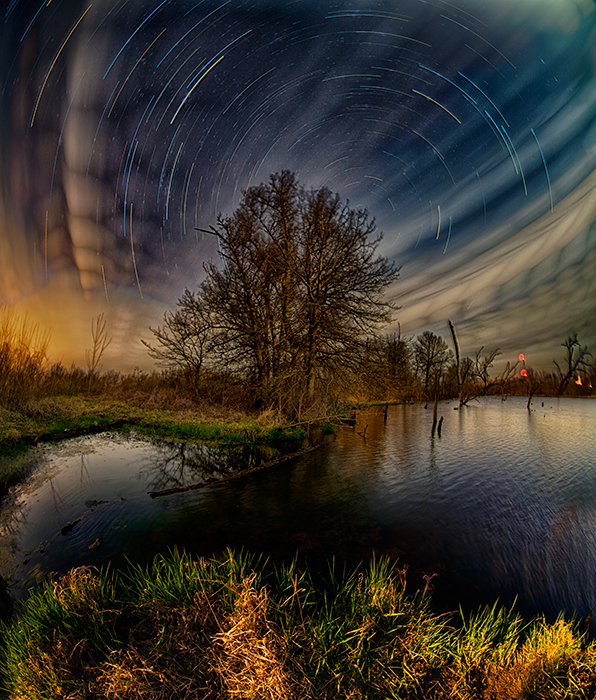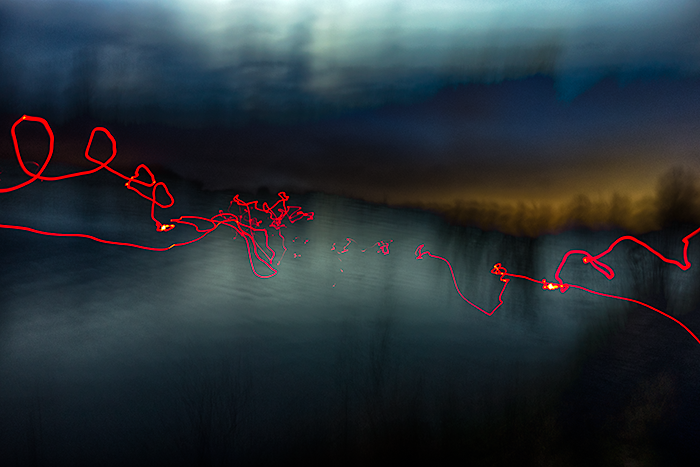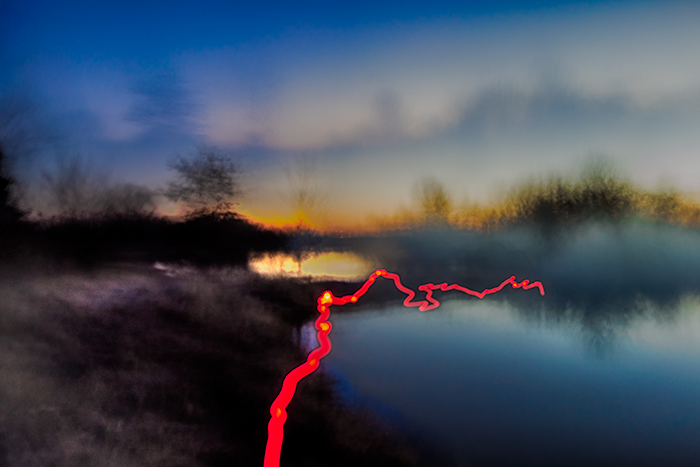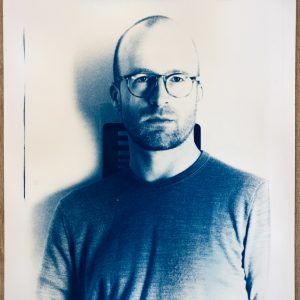How can you explain your interest in infrared photography?
Rendering information that is beyond human sensation helps to establish the strict limits we generally impose on authenticity. Something that exists is always a complex multifaceted entity and can be rendered in a spiritual or incorporeal manner. Getting to the intrinsic or indispensable properties that serve to characterize or identify manifestations, understanding of external appearances is informed by deeper perceptive reasoning. A thing cannot lose its essence without ceasing to survive. Reality must include everything that is, whether or not it is visible or explicable.
Do you use infrared filter or infrared film? Maybe something else?
I converted my original Canon 5D into a dedicated digital infrared camera, by replacing the infrared block filter in front of the sensor with an infrared pass filter. This eliminates the need to use an infrared filter in front of the lens, facilitating lens changes, image composure, and focusing.
The most part of images in your profile are not infrared. They are long-exposed night images. As I see, they are constructed from different images of sky and land because I will never believe that you can get so sharp grass and trees by shooting them with a very long exposition. Do you use sky and land from one place or combine them from different images of skies and lands in your collection?
Are the images of the sky long-exposed or they are composed of a lot of images taken during the night?
These images are from my “Durational Occurrence” series. Establishing order out of appearances, humans apprehend only in the manner that their biological structure makes possible. Within such limitations, aesthetic enjoyment enhances the value of metaphysical speculation, even as certainty is not a logical part of the formulation. Reason seeks increasingly abstract levels of generality to explicate existence as belonging to an integrated and organized system. By making inferences and identifying the grounds behind every truth, thoughts move from the particular-contingent to the global-universal. As an abstract concept, time can be measured in many different ways from many diverse perspectives.
To make these images, I arrive at a promising location about an hour prior to sunset. I set my digital cameras on tripods, and begin making a series of intermittent exposures over approximately an eight-hour duration. Early exposures are separated by long periods. When the stars appear, the interval between long exposures (~ 4 minute each) is reduced to a fraction of a second. Thus, I end up with hundreds of images from the single fixed camera position, spread temporally across the transition from day to night. Using Adobe Lightroom and Photoshop, I process all these images into a single frame.
Each distinctive durational experience compiles to contribute to the absolute whole. In the night sky, existence takes hold of its own ephemerality. Things experienced are channels of appreciable time itself, because all physical objects are temporal in themselves. What does the color of night taste like? Degrees of coincidence are involved in presenting an apparent durational pattern of events. Experience offers momentous clues of probability, establishing what passes as unfolding significance. Through aesthetics, the necessary and sufficient conditions for a meaningful life are uncovered. A confluence of aesthetic conditions helps to validate the grounds of understanding in a multifarious manifold. Experience in its totality is capable of relationships that are free and unregulated.
Do you use any timer gadget?
I use an external intervalometer that makes long exposures at set intervals. The temporal series of past events is fulfilled by successive addition.
Also we see some blurred images with strange light effects in you profile. What is it? How to make such images?
Sometimes an intuitive spark of energy generates another progressive path. At such junctures, the significance of aesthetic investigation validates by pushing a creative project in new directions. These images are from my “Point Source” series, which evolved from the “Duration Occurrence” project. The idea is to photograph an operating camera set-up on a tripod that is making a series of exposures representing duration. During this exposure series, a red LED illuminates on the camera-back to indicate that the shutter is open. Using another camera, I make a long exposure of the fixed LED point light source while walking toward the tripod/camera from a distance away. The trajectory and speed of my ambulation determines the resulting shape of the red light tracing against the ambient background.
This inclusive action is nicely hermeneutic, as the tool of image making becomes the object of imaging making, during image making. In an interesting twist, as subject matter the placement of the capture camera during the “Durational Occurrence” exposure becomes important for the subsequent “Point Source” exposure. Being in the world can often become recursive. Many successive executions involve action of which a part requires the application of the whole. It is nice to have imaging projects nested into other imaging projects, maximizing creative experience. Dancing with point source illumination at dusk expresses a songlike outpouring of thoughts and feelings. Being there in the dark of the night, equipment employed becomes part of an opening into intelligibility. Starting from the natural setting, refining experience in the light of night, the real object is the thing out there. Such a fabricated abstract theory must go beyond the appearances of physical reality and roam in the unknown.
What is really important in photography for you?
An appealing aspect of imaginative photography is the unpredictability associated with the many variables in play. When the results are satisfying, it stimulates the desire to make more. Creativity is a reiterative cycle. The ability to predict the capricious is what constitutes technique virtuosity. A vital and functional human being straddles the gap between internal subjectivity and external objectivity. Meanwhile, the artist/philosopher engages a critical and reflective attitude to promote originality and freshness of perspective. Many simultaneous hypotheses supplement equivalent observational inquiry, allowing for inherent variability. Progress is the ability to grow and adapt as a function of dynamic experience. All mental modalities contribute to this progression.
Can you tell us about your favourite tricks?
Approaching fine art philosophically, I am devoted to visual image creation employing diverse photographic processes. My trick is to leverage the intrinsic unique characteristics of energy, matter, space, and time to explore the boundaries of physical and transcendent existence.Some roads are more enticing than are others, but there is always more to see and more to do. With every path traversed, the experiential base deepens and each passing moment becomes more meaningful. In this light, an intuition/inspiration is something that provides incentive or that gives an idea about what to do or what to create. Perhaps a more useful distinction is that intuition is a non-rational understanding generated from within, while inspiration motivates from external assistance. In any such potential postulate, imagination is required.
I think, there are some photographers who inspire you. Can you tell us about these people?
Alfred Stieglitz, an artist/philosopher who over a fifty-year career made photography into an accepted art form.
Do you participate in any exhibitions or contests?
Yes, I exhibit images in juried shows and select art galleries. http://www.wilsonhurst.com/personal/wilres/exhibition%20record.htm
Do you earn money via photography or it is just a hobby? If earn, does IR photography plays any role in it?
I teach all aspects photography at the University level.
Have you got your personal site? Or maybe, a profile on some site where we can see more infrared works?












